In Thailand, little things are as impressive as the biggest monuments.
Tourists quickly walk around a temple’s main tower/stupa and public assembly hall, and miss the other enchantments. But these little things have a lot of influence on how Thais see the world.
All the photos in this post are of some of the treasures in Wat Phaya Wat, in a historic town in northern Thailand called Nan. The last post on Wat Phaya Wat shows how forms of the big buildings flow together so they seem like benevolent energies that embrace you as you wander around. Nice, but that’s only part of the wat experience. Look at the little things, and you can notice several aspects that are common in Thai perspectives:
1. The above 2 panels are inside the vihara (public assembly hall). The human form in the first shot, and the pot in the second blend with leaves. The leaves’ forms seem both animated and graceful. They look a bit like flames. Their golden colors make them appear full of energy. But this energy is more subtle than a fire’s–it doesn’t burn, it glows. The powers that animate nature are thus more spiritual and benevolent than destructive.
2. Folksy touches. Zodiacal animals, like the rooster (above), proudly strut under the balustrades in front of the vihara. Like the figures in the first photos, they blend with floral patterns that are both flame-shaped and graceful.
Artisans recently added plaster decorations to pillars on the outside of the vihara. The flowers and leaves in the above shot also project graceful flame patterns.
Even the happy bees above sport the same patterns. We’re as far from Francois’ elephant as we can get. Nature’s power animates even the smallest creatures. And they add humor to the landscape so people can relate to them. Even the bees in Thailand smile.
3. Kitsch. What was the guy who recently decided to add this facade to the vihara thinking? It must have been a guy–I’ve never known a woman who would have shown such a complete lack of taste by adding more flash than a Vegas neon sign to this stately building.
But this facade needs to be seen through Thai eyes. It too is full of curves that are both animated and graceful. And its hue also softy glows.
The key thing is, all these decorations mix and flow together as you walk through the wat. The experience blends categories. This is why you rarely see universities cover Thai studies well, and why Google’s search box won’t get you into the culture either. Multiple ideas blend so playfully that you can’t categorize the experience:
1. Animated power and graceful flow.
2. Seriousness and humor.
3. Bright flickering colors and soft hues.
4. Dignity and flash.
The wat’s main buildings’ and little decorations’ forms and colors mix in infinite ways as you amble around, and they put you into a different world. Nature’s abundant energies are at play. They’re spiritualized, rather than dense and massive. These patterns of energy radiate benevolence on the community. When you enter a wat, you can wander through them and never run out of things to enjoy. You can then go home and give your children a big smile and hug.
Thai patterns will happily live into the next generation.

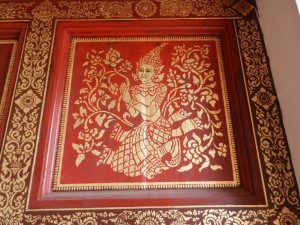
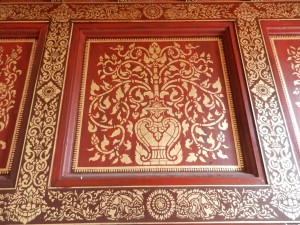
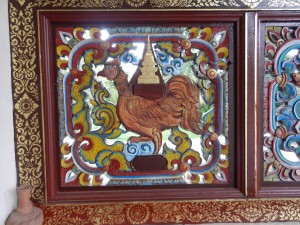
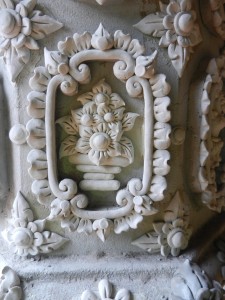
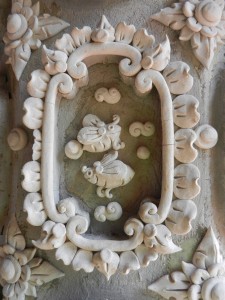
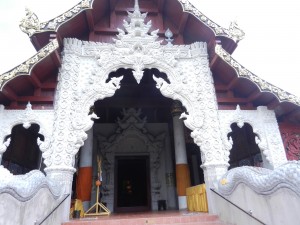
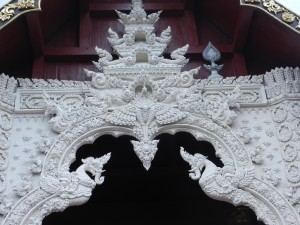
Comments on this entry are closed.